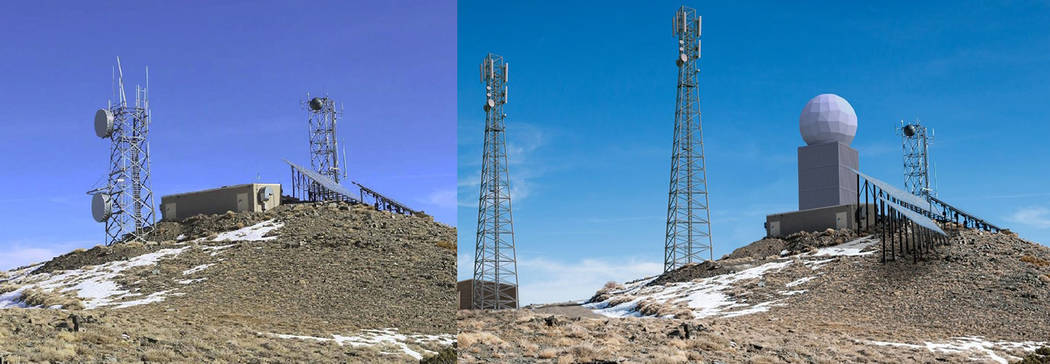Rogers Peak public comment period extended
The public has extra time to comment about proposed telecommunications infrastructure on Death Valley’s Rogers Peak. Due to disruptions from the five-week government shutdown, the National Park Service has extended the public comment opportunity through Feb. 25. The proposed changes would increase the area’s cellular service and affect some views.
If the Park Service approves the right-of-way permits, the following infrastructure could be added or changed:
■ Navy radome - China Lake Naval Air Weapons Station would build a 28-foot-diameter dome containing a telemetry antenna. This would be located on top of a support building, with a combined height of up to 60 feet. The telemetry antenna would provide enhanced monitoring of all military branches’ use of the R-2508 airspace.
■ AT&T cell tower – AT&T Wireless would transmit cellular service from a tower up to 99 feet tall. This would provide cellular service in parts of Panamint Valley and Death Valley that currently have no signal. There would likely be capacity on this tower for other agencies or companies to co-locate in the future.
■ Caltrans communications tower – The California Department of Transportation (Caltrans) owns a 50-foot-tall tower that is over-allocated and structurally unsound. Caltrans would remove this tower and construct a replacement tower up to 99 feet tall. The Caltrans tower also hosts communications equipment for Southern California Edison and multiple federal, state, and local agencies.
■ Support infrastructure – Two small support buildings would be removed; their equipment would be moved to the base of the radome. AT&T could add a support building. Existing propane tanks would be increased in capacity and relocated. Solar panel arrays would be increased in size, and potentially installed in a new location.
Death Valley National Park is part of the Basin and Range Province, which consists of mostly north-south trending mountain ranges alternating with valleys. This geography makes mountain summits ideal locations for wireless communications. Most of the park’s 5,300 square miles are off-limits for this type of development due to wilderness designation. The 9,990-foot summit of Rogers Peak has a 2 ½-acre area of non-wilderness where construction of permanent structures can be considered.
Rogers Peak has housed telecommunications infrastructure since 1959. Currently, the National Park Service, the Air Force, the Bureau of Land Management, the Federal Bureau of Investigation, the National Oceanic and Atmospheric Administration, Caltrans, the California Office of Emergency Services, the California Highway Patrol, Inyo County, and Southern California Edison have infrastructure on Rogers Peak. This existing infrastructure consists of a 50-foot Caltrans tower, 62-foot Air Force tower, three support buildings, propane tanks, and solar panels.
Initial public opinions of this proposal were divided, especially regarding the proposed cellular site. Some people expressed support, stating that increased cell coverage area would increase safety. Others opposed the proposed cellular tower, stating that one of the things they value about wilderness is an escape from technology.
Death Valley National Park encourages public participation. The Rogers Peak Multi-Use Instrumentation and Communications Facility Environmental Assessment can be viewed online at http://parkplanning.nps.gov/deva.
Comments can be submitted at the same website or mailed to Death Valley National Park, ATTN: Rogers Peak Environmental Assessment, P.O. Box 579, Death Valley, CA 92328 by February 25, 2019. Responders should be aware that responses are not confidential.
Abby Wines is with the National Park Service at Death Valley

















